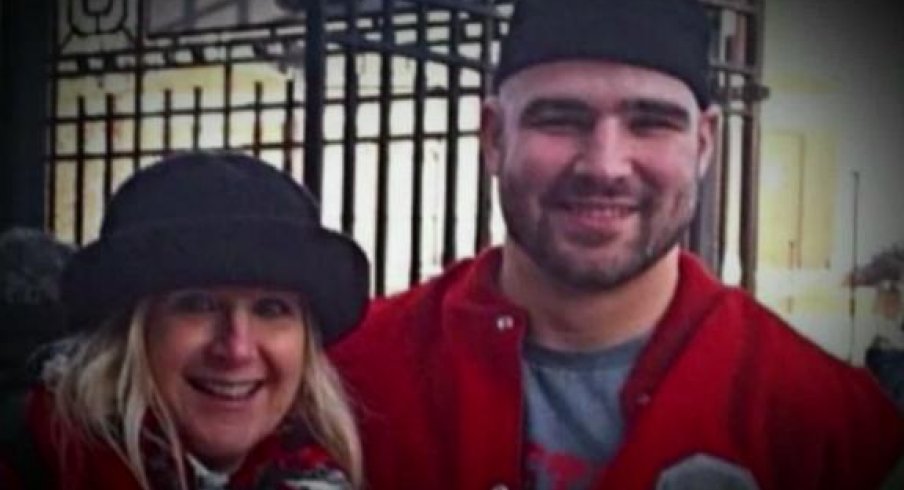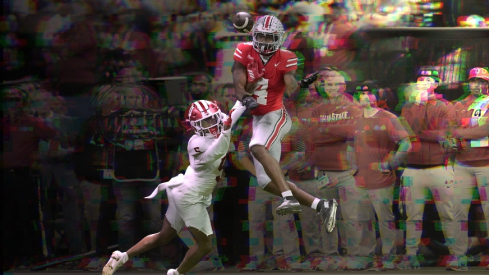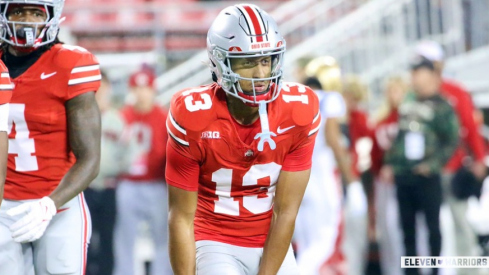Story in memory of Kostadinos Alexander Karageorge: July 10, 1992-November 30, 2014
The discussion of head injuries in football is an easy one to avoid. It’s uncomfortable. It’s not fun or light. It doesn’t pair well with a Saturday afternoon tailgate.
An estimated 10 percent of college football players sustain brain injuries each season. Big deal; the treatment for a concussion is rest. You take some time off and move on. So, why do we care?
Repeated concussions have been shown to cause cumulative deficits after each separate incident. This phenomenon has been labeled chronic traumatic encephalopathy (CTE). What’s this mean on a more tangible level?
THE BAD NEWS
Data from the nation’s largest brain bank (a center that researches brains which have been donated for educational purposes) recently found evidence of degenerative brain disease in 76 of 79 former NFL players.
That’s 96 percent.
Hall of Famer Mike Webster, former Pittsburgh Steeler center, suffered from dementia and depression before his death in 2002 at just 50 years old. The pathology report confirmed CTE.
Former NFL safety Dave Duerson committed suicide in 2011 at the age of 50 by a self-inflicted gunshot wound to the chest. Why the chest? He told his family he wanted his brain to be used for research. The pathology report confirmed CTE.
Former San Diego Chargers LB Junior Seau committed suicide in 2012 at the age of 43, also by a gunshot wound to the chest. Did he, too, intend to have his brain researched to help increase awareness of the consequences of repeated concussions? The pathology report confirmed CTE.
Jovan Belcher shot and killed his girlfriend and then committed suicide in front of Kansas City Chiefs team officials at their practice facility in 2012. He was just 25 years old. Again, the pathology report confirmed CTE.
And Buckeye Nation lost one of our own this past November when varsity wrestler and defensive lineman Kosta Karageorge committed suicide with a gunshot wound to the head.
These athletes have been identified as such – athletes. However, their football careers were intended to be only one chapter in their individual unique stories.
The tragic illustrations above are just an excerpt of the problem. The horrific cases go on and on.
So no, it’s not the popular conversation to have. But it’s past time to talk.
WHO'S AT FAULT?
Two things need to happen when a concussion occurs: identification and intervention.
Step one: Somebody needs to realize a concussion has happened. Some concussions are easy to identify, like the helmet-to-helmet collisions, because they’re heard throughout the entire stadium. Those are obvious – the players involved need to be taken off the field for evaluation.
Other concussions aren’t so apparent; maybe the impact happened in a pile-up or while hitting the ground after a routine-appearing tackle. Those are tougher for medical staff to identify.
If the concussion causes the athlete to become confused, the athlete himself might not even realize what has happened.
It’s even more challenging to rely on teammates to identify abnormal behavior on the field. There’s so much action going on at any given time in a game or practice, and each player is focused on the responsibilities of his own position.
So, who’s at fault when a concussion goes unnoticed? Truly, no one person can be blamed. Identifying a concussion is a cooperative effort between medical staff, teammates, coaches, other sideline personnel, and the athlete himself.
Anyone can express concern. What's the worst thing that could happen if a player gets pulled aside for an assessment which doesn't yield any problems? Not much, right? Now consider, what's the worst thing that could happen if a concussed lineman stays right out there on the line of scrimmage for the next down?
A devastating consequence of returning to play too soon, like right away after a concussion or even a week later when most symptoms have resolved other than a little lingering headache, is called second impact syndrome. It’s a concussion on top of a concussion, and it causes catastrophic swelling in the brain which is often fatal or otherwise severely disabling (E:60 story here: Preston Plevretes' life after tragedy).
Step two: Somebody needs to take action. What does this look like in the setting of a practice or game? Action means pulling the athlete out and performing a comprehensive assessment.
The assessment includes a list of questions for the athlete to evaluate mental status (ex- What’s the score? What was the last play?), questions about symptoms (like headache, nausea, dizziness), and a physical exam (which includes looking at balance and coordination). A commonly-used assessment tool can be found here.
It would seem like the healthcare provider is responsible when the intervention part of this equation fails. However, this is also a collaborative effort.
No athlete wants to come off the field, and no athlete wants to stay out of competition. This is where health becomes the priority. Honest reporting of residual symptoms is crucial, and this needs to emphasized to the affected athlete.
THE GOOD NEWS
The cases outlined above are not intended to be perceived as scare tactics. They’re not rare. They’re not exaggerated. The true intent of this information and the information which has saturated the media in the past few years is to promote awareness and encourage responsiveness.
And it’s working.
People are paying attention. Better yet, the right people are paying attention. And best of all, the right people are taking action.
A decade ago, it would have been considered sufficient for a sideline assessment of most possible concussions to be a quick flashlight in each eye and sending the player back out on the field as long as the pupils reacted. Shake it off. Go get ‘em.
Not so anymore. Today, brain health in athletes is a priority.
Awareness of the gravity of concussions among football athletes is higher than ever, and the response is measurable and commendable. In fact, the NFL has now mandated that one unaffiliated neuro-trauma consultant (neurologist, ER physician, or neurosurgeon) be on the sideline of every game for each team to assess possible concussions. Many high school and college teams are following suit.
Numerous organizations have also instituted pre-season cognitive assessments (usually a test on a computer) to attain a baseline status for each player so he can be re-tested after an impact and results can be compared.
Football isn’t going anywhere. People will call it barbaric. People will keep their kids out of it. Fine. But it's not going anywhere. Period.
What is going somewhere is the unnecessary risk leading to unnecessary consequences. This can be changed.
No head injury should be disregarded.
No athlete should die, no parent should lose a child, no child should lose a father to chronic traumatic encephalopathy or second-impact syndrome.
Ever.
The bottom line: This is a crucial issue which deserves generous precautionary measures. Again, anyone can help identify a possible concussion. Action needs to be taken. Return-to-play absolutely cannot happen until symptoms are 100% resolved. This is a team effort, it’s happening, and that’s a wonderful new horizon – one that will save the lives of the athletes we cheer for in the fall and the people who are valued and loved year-round.
More on the NFL concussion management program here.
Note: Kosta Karageorge’s death cannot be directly attributed to his concussion history. There was no evidence of trauma affecting the brain on his neuropathological report. However, Karageorge himself acknowledged that the concussions he suffered were affecting his mind in text messages sent to his mother a few days before his suicide. His mother reported to the police that her son had sustained several concussions and experienced some episodes of confusion.
References:


